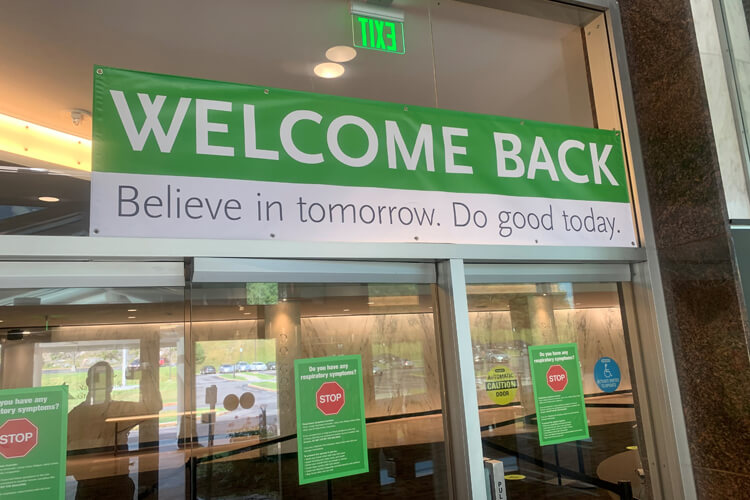The industry publication Life Annuity Specialist took note of National Life’s pandemic planning in a recent post, quoting Chief Auditor Al Foice.
You can see the article below or, using your National Life credentials, sign up for an account and find it at this link.
How Life Insurers are Getting Ready for the Next Pandemic
By Hannah Miller
Though rising vaccination rates signal that the Covid-19 pandemic may be ending soon, another outbreak could be on the horizon.
The risk of pandemics is increasing rapidly, an international panel of experts who study biodiversity and ecosystems said in an October report. The danger is growing partly because of climate change, loss of diversity of species, and increased interactions between wildlife and people as forests and grasslands shrink.
With this threat in mind, life insurers aren’t taking any chances.
For carriers, the Covid-19 pandemic presented serious challenges like transitioning to remote work and changing business practices to better meet customers’ needs. We spoke to multiple companies about the lessons they learned from this experience and how they’re preparing for the possibility of a similar event in the future.
“Hopefully, we never have to go through this again, but I’m also a realist and we likely will,” said Jenny Guldseth, chief human resources officer for Allianz Life of North America.
Making Adjustments
Before the coronavirus began spreading widely, Allianz Life had a pandemic strategy under its business continuity management plan, according to Guldseth.
“We had one in place, but not as robust as the one we have now,” she said.
After the virus hit and Allianz Life moved to remote work, the company spent time revamping its pandemic plan to account for a safe return to the office. It now has social-distancing guidelines from the Centers for Disease Control and Prevention in place and implemented temperature checks and health screenings at its Minneapolis headquarters.
The company currently has 10% of its employees coming in on a typical day and hopes to transition more workers back in the fall as inoculation rates grow, according to Guldseth.
She said one important thing the company learned from Covid-19 is the importance of adapting to constantly changing information as well as checking in with workers.
“Being flexible and listening to employees really was absolutely key to this whole process,” she said.
Planning Ahead
At National Life, the insurer had already addressed a pandemic scenario in its business continuity plan, according to Chief Auditor Al Foice. He said the company even had some “dry runs” when swine and avian flu broke out in the past.
Still, the Covid-19 outbreak was on a completely different scale.
“I don’t think anybody really contemplated that we’d still be doing this a year after,” he said.
National Life dusted off its pandemic plan in early January 2020 to form a strategy, according to Foice. He said the company felt confident about a mass transition to remote work because internal data showed that 90% of its employees had successfully worked from home within the past 30 days.
The insurer’s information technology department also ordered extra equipment like monitors and laptops and made sure that more tech support would be available to help employees do things like connect to a virtual private network from home, according to Foice.
He also said the company also focused on acknowledging the personal impact the pandemic has had on employees.
“We were encouraging our leaders to be flexible with their staff to enable them to be able to both deal with the business needs of doing their job, but also the challenges of being at home,” he said.
At the start of April, National Life gave employees the option to work from its offices in Vermont and Texas and plans to have work flexibility in place through the end of 2021.
Adapting for the Future
For Thrivent, the business continuity plan outlined a response to a regional flu outbreak, rather than a global one, according to Mark Theisen, director of corporate security and business resilience.
The company is using what it’s learned from Covid-19 to form future plans related to working remotely and returning to the office, he said in an email. A key lesson is that a pandemic will probably include a significant number of shifting regulations.
“Companies should be sure to have a process in place to address the federal, state and local regulations that have the potential to change rapidly,” he said.
F&G used insights from the pandemic to make changes to a new office location it was building in Des Moines, Iowa, according to CEO Chris Blunt.
“This includes enhanced safety features such as easy-to-clean work stations, glass dividing panels to increase wall heights, common areas with no fabrics and multiple sanitizing stations,” he said in an email.
A central lesson for Nationwide was the importance of quick decision-making and transparency, according to a company spokesman. He said in an email that the carrier’s workforce also grew more tech-savvy, which may help as the company moves to a hybrid model where many employees will permanently work from home.
For TIAA, one of the most important lessons from the pandemic was that the relationship between companies and their employees has now shifted, according to an email from Matt Sulkey, head of operational risk programs.
“Employees view their employers as more than a source of compensation and benefits,” he said. “Employers are now viewed as social safety nets and sources of information.”

